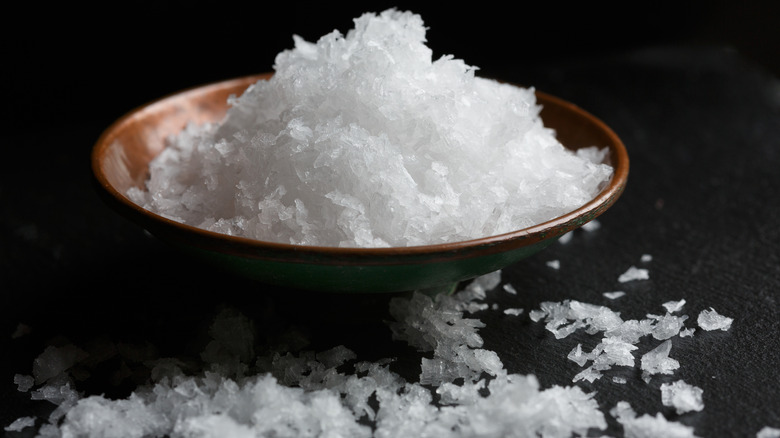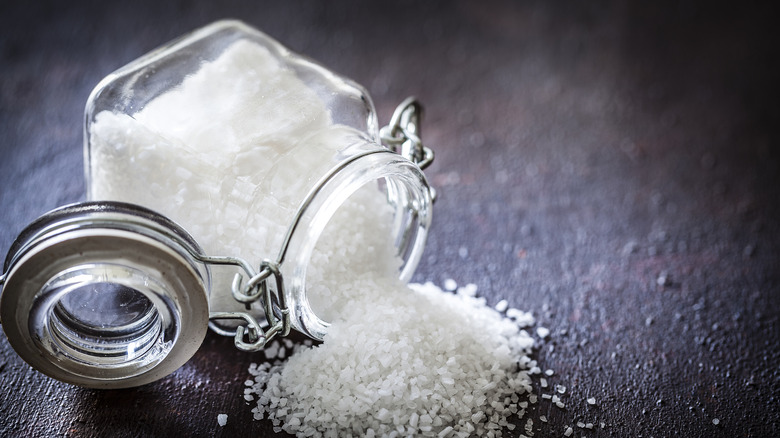Why Is It Important To Use Finishing Salt When Cooking?
There are many common varieties of salt, from the table to blends, like garlic salt, and each one has a specific role to play in your culinary adventures. One salt that you might be under-using — to your foods' detriment — is finishing salt. When speaking with chef Richard Sandoval, of Richard Sandoval Hospitality, Food Republic learned, "Finishing salts, like Maldon or fleur de sel, add a final touch of texture and a burst of flavor that enhances the eating experience."
He continued, "Their delicate crystals dissolve on the palate, giving a pleasant contrast to the dish's texture. A sprinkle of finishing salt also draws attention to specific flavors and makes the presentation visually appealing." To use your finishing salt, simply pick the kind that works best for your dish or suits your palate (in addition to Maldon and fleur de sel, the most popular varieties include sel gris and Himalayan pink) and sprinkle some over your finished product right before serving.
Finishing salt is perfect for a number of applications, including roasted chicken with lemon butter, easy roasted potatoes with garlic, and other vegetables, ribeye with goat cheese (or really any protein, including salmon), and even on your sweet treats — chocolate chip cookies or hot chocolate with a sprinkle of finishing salt? Divine. Dishes where finishing salts don't belong? Soup or stews; it'll just dissolve into the liquid, making it extra salty, especially if you already seasoned it to taste.
How to store finishing salts to preserve freshness
Depending on how often you cook, you might not use finishing salts enough for them to warrant a place of prestige on your counter. And actually — that's just fine because keeping them "away from light, heat, and moisture," according to chef Richard Sandoval, is best to preserve their flavor. He recommended storing them in airtight containers, like a glass spice jar set, and to "avoid placing them near the stove or in the fridge, as fluctuating temperatures and humidity can degrade their quality." You should also avoid keeping them near the fridge, as it can put off a decent amount of heat.
"Label containers with purchase dates to ensure regular rotation," Sandoval also suggested. Most salts, including cheap salt that you can turn into fancy stuff, last up to five years, though pink Himalayan salt has a slightly shorter shelf-life of up to three years. Note that salt rarely goes bad the way that perishables do; instead, it may simply lose its vibrancy of flavor, and these are just guidelines for how long you can expect them to stay at peak condition.


